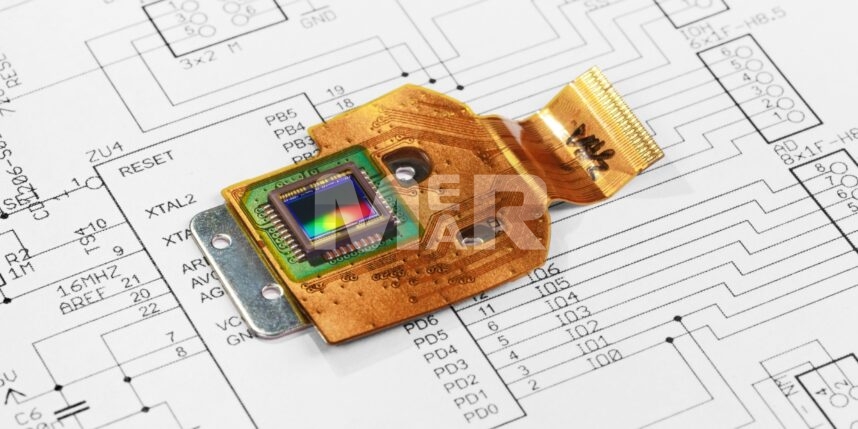Top Key Considerations While Designing Flex PCB Prototypes!

Flex PCBs are ubiquitous in their use these days. From finding a place in smart watches, mobile phones to industrial application, its usage will only increase, as miniaturization becomes a norm.
The big advantage of flex PCBs is that it can be fitted into space-constrained environments. In addition, they are suited for use in products where there is vibration, constant movement as also mechanical stress.
Additionally, Flex PCBs offer great electric performance. They have a low dielectric constant that allows electrical signal transmission. Their excellent thermal properties make the cooling of components easier, and a higher glass transition temperature ensures that components can operate in elevated temperature conditions.
Despite its advantages, however, designing of Flex PCBs comes with some constraints. For one, the set-up cost of manufacturing flex PCBs is higher. Let us look at some design tips for flex PCB prototypes.
Design tips for Flex PCB Prototypes
- Due importance needs to be given to component placement. You need to be particularly careful of the spacing when the circuit is being bent. The use of 3D flex PCB design tools can go a long way in ensuring this.
- In order to prevent vias from cracking, it is important that the vias be tear-dropped. Also, wherever anchors or tabs are added the annular rings need to be large.
- Due to the flexible nature of the circuit, the pads are susceptible to lifting off the substrate. It, therefore, needs to be anchored. This is done by extending ties from the pad that are encapsulated by the coverlay. Also, large pad sizes work well as they help with stress relief. In fact, pads need to be larger than the drilled hole as the prototype could be subject to bending at different angles.
- Traces need to be routed perpendicular to the bend line.
- Mechanical stress needs to be spread evenly on all traces.
- A large bend radius works much better than sharp angles. Curved traces cause lower stress than angled ones. Also, traces should be kept perpendicular to the overall bend.
- A hatched polygon for the ground plane works much better than a solid-filled polygon plane. With a hatched polygon, the risk of copper cracking is significantly reduced.
- The flex layers should be placed in the center of the stack-up. By doing so you tend to offer protection from exposure to outer-layer plating. It also eases manufacturing and improves impedance.
- The thickness of the material needs to be determined taking into account factors such as size of the bend radius. As a thumb rule, the bend radius of a flex PCB shouldn’t be more than 10 times its thickness.
- Impedance control is a challenge when it comes to flex circuits. Single-layer flex circuits can use a co-planar stripline construction. Two-layer flex stack-ups will benefit from a microstrip structure that works well for 50-ohm circuits. With higher layer counts you can create a stripline construction.
Some of the pitfalls to avoid at the design stage, when it comes to Flex PCBs include:
- Considering flex at the end of the assembly as opposed to the beginning results in many issues including creating a more expensive flex.
- Not taking into account Design for Manufacturability practices into account results in costly errors. Factors such as minimum line width/spacing, annular ring etc. must all have manufacturing allowances built into the CAD design.
- Not taking into account the different tolerance capacities can have its implications. Very often, designs don’t take into account the realities of the material. Hole pattern locations, for example, can inhibit flexing.
- Not having the documentation in order also leads to a number of issues. Whether it is not creating a comprehensive drawing package or improper revision control can all have their implications.
- There are also electrical and mechanical design issues to be considered. Some of these include considering the number of flexes, balancing the electrical and mechanical requirements. For example, high-speed signals require thick substrates. Similarly, high current layers require thicker foil and adhesives.
- It is also important to take into account the cost drivers such as the number of layers into account. Also, slight adjustments in shape can lead to cost differences, especially for larger circuits.
Taking the above aspects into account can go a long way in ensuring the efficacy of flex circuits.
Mer-Mar Electronics is one of the leading PCB manufacturing companies, providing services from designing to final prototypes. We follow industry’s best practices, ensure standard quality PCB assembly prototype that our clients do not deal with recall or rework. Ask your queries related to flexible PCB prototyping and flexible PCB fabrication services by emailing us at sales@mermarinc.com or call us at (760) 244-6149.








